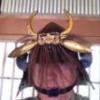-
Posts
13,782 -
Joined
-
Last visited
-
Days Won
249

Bugyotsuji replied to Bugyotsuji's topic in General Nihonto Related Discussion

Bugyotsuji replied to Bugyotsuji's topic in General Nihonto Related Discussion

Bugyotsuji replied to Bugyotsuji's topic in General Nihonto Related Discussion

Bugyotsuji replied to Mantis dude's topic in Translation Assistance

Bugyotsuji replied to Mantis dude's topic in Translation Assistance

Bugyotsuji replied to jason_mazzy's topic in Translation Assistance

Bugyotsuji replied to Viper6924's topic in Translation Assistance

Bugyotsuji replied to Viper6924's topic in Translation Assistance

Bugyotsuji replied to Viper6924's topic in Translation Assistance

Bugyotsuji replied to Viper6924's topic in Translation Assistance

Bugyotsuji replied to Viper6924's topic in Translation Assistance

Bugyotsuji replied to Viper6924's topic in Translation Assistance

Bugyotsuji replied to lonely panet's topic in Translation Assistance

Bugyotsuji replied to lonely panet's topic in Translation Assistance

Bugyotsuji replied to Viper6924's topic in Tanegashima / Teppo / Hinawajū

Bugyotsuji replied to Viper6924's topic in Tanegashima / Teppo / Hinawajū

Bugyotsuji replied to Viper6924's topic in Tanegashima / Teppo / Hinawajū

Bugyotsuji replied to lonely panet's topic in Translation Assistance

